
Imaging: iPhone Jupiter, D7000 Moon
Posted: 5 November 2012
Opened the observatory Sunday, 4 November 2012, at 2131 MST, 63°F. The sky was clear. I spent the next 40 minutes doing some product testing for an upcoming review. I then did some Jupiter observing with the 8" LX200-ACF, 206X. Four moons were visible. Some good details were visible in the cloud belts. I added a 2X Barlow Lens, yielding 412X. This provided a good view but Jupiter was still very bright. Added the Moon Filter, which reduced the glare from Jupiter, making viewing better. At 2224 MST, the eastern sky was beginning to brighten due to the rising waning moon. I removed the Barlow Lens and did some more Jupiter observing, 206X + Moon Filter. This combination provided the best view of Jupiter. I then did another 30 minutes of product testing, which was completed at 2302 MST. I took a quick look at M42 in Orion, 77X, which had just risen above a tree. The rising moon hampered the view somewhat.
At 2312 MST, I began doing some iPhone 4 imaging of Jupiter, afocal 444X + Moon Filter, MX-1 adapter, Camera app. This single exposure (cropped) faintly shows two moons to the left of Jupiter; Io (left) and Europa (right):
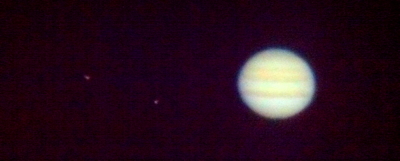
This next image is a stack of 2179 frames (90 seconds of Camera app video):
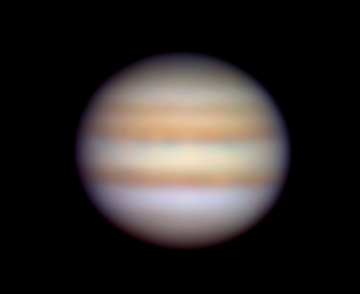
One of the problems when using the Camera app for video recording is that the focus and exposure can change during the recording based on changes in seeing. I used FiLMiC Pro for a video; it has focus lock and exposure lock capabilities. This is a stack of 2904 frames (120 seconds):
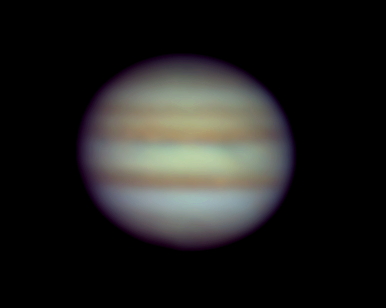
I plan to do some more FiLMiC Pro imaging of Jupiter to try to obtain better results.
I finished iPhone imaging of Jupiter at 2327 MST, and did some more Jupiter observing, 206X (no Moon Filter). At 2336 MST, slewed over to the moon, low in the east, and did some observing at 77X and 206X. The terminator was nice but the moon was too low for imaging. I did begin preparing the telescope and D7000 DSLR for prime focus imaging.
At 0005 MST, took this prime focus + visual back, 1/320sec, ISO 250, (uncropped) image of the moon:
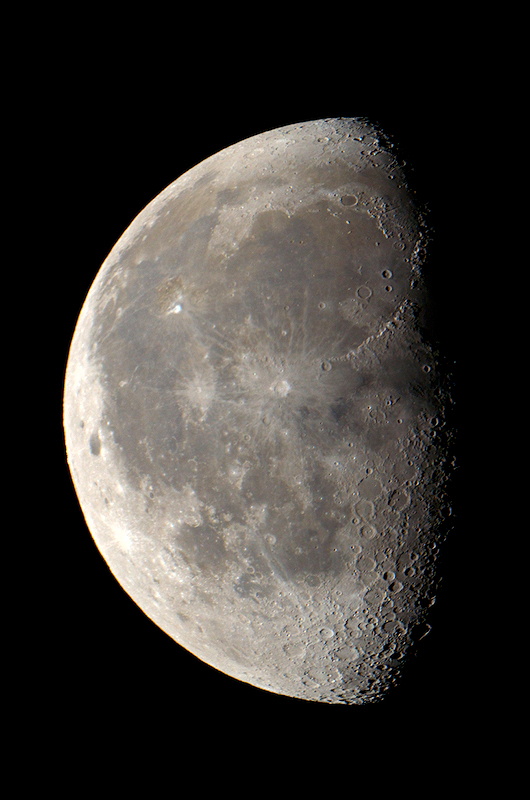
I captured this (cropped) view of mountain shadows at 0018 MST, "Hat Trick", ISO 500:
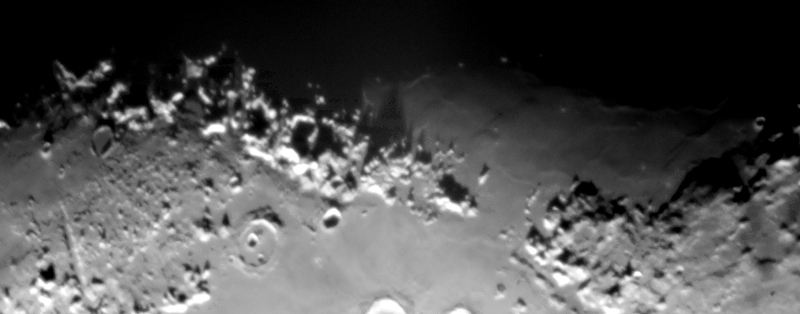
At 0020 MST, just as I completed lunar imaging, I saw a nice Taurid Meteor Shower fireball. It appeared near Capella (near the zenith) and moved down towards the northeast horizon. It was as bright as Jupiter.
I then did some lunar shadows watching, 206X. At 0030 MST, I did some more product testing. At 0041 MST, I took a final look at Jupiter, 77X. There were still four moons visible, and the Great Red Spot had now rotated into view.
Closed the observatory at 0049 MST, 62°F.
Comments are welcome; use the Comments section below, or you can Email Me. Thanks.
Go to the previous report.
Return to the Cassiopeia Observatory Welcome Page.